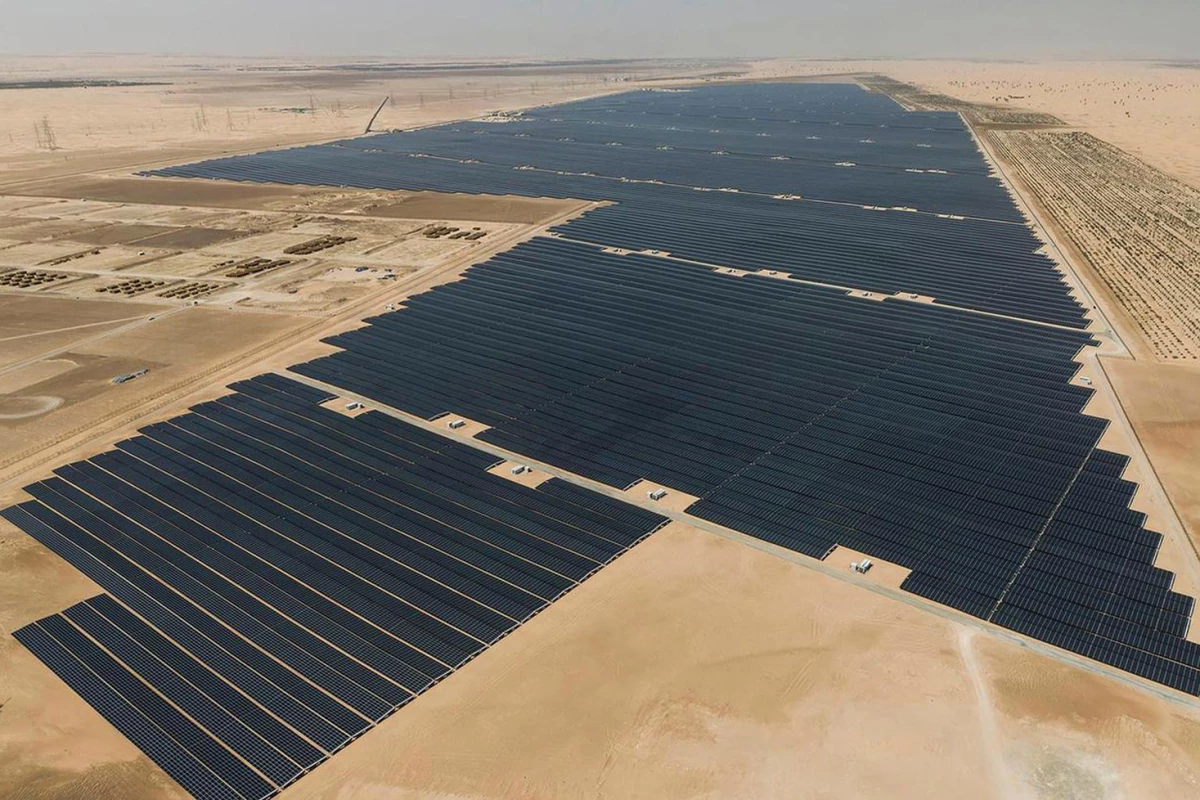Abu Dhabi is claiming the title of the world's largest single-site solar project, having hit the go-button on the Noor Abu Dhabi project this week, with a reported capacity of 1.177 gigawatts, eclipsing Dubai's Mohammed bin Rashid Al Maktoum Solar Park – for now at least. The United Arab Emirates doesn't have a great record when it comes to per-capita carbon footprint, but projects like this show that it's serious about addressing the issue head-on.
Rivalry between nation states can often be a driver of progress, and this is particularly evident when observing Abu Dhabi and Dubai's efforts to trump each other in the field of solar power. By kicking the world's largest single-site solar project into full commercial operation this week, Abu Dhabi looks to have scored a decisive goal against its neighbor.
Firstly, it's important to differentiate between a single-site solar project such as this, and what's generally understood to be the definition of a solar park. Solar parks are areas that have been dedicated to solar production, with grid connections in place, where an assortment of business or government interests are able to set up their own, independent solar projects, while taking advantage of shared infrastructure.
Single-site solar projects are just that – one project covering the entire site, and this is why the title of world's largest single-site solar project is justified, even though there are a number of solar parks that are larger in India and China. That being said, many observers get bogged down in the finer details of solar energy, from scale to measures of output and capacity. The important thing here is simply that it's big – 3.2 million solar panels – and it has a huge output. That has to be good news no matter how you slice it up.

Noor Abu Dhabi is located in Sweihan, around 100 km (62 mi) from Abu Dhabi and is a joint project between the Emirates Water and Electricity Company (EWEC), Japan's Marubeni Corporation, and Shanghai-based JinkoSolar, the world's largest manufacturer of solar panels. According to the Abu Dhabi media office, the project has sufficient capacity to supply 90,000 people and is expected to reduce Abu Dhabi's CO2 emissions by one million metric tons, or the equivalent of removing 200,000 cars from the road.
"The completion of the project marks a significant milestone in the UAE's Energy Strategy 2050, launched in 2017, to increase the contribution of clean energy in the total energy mix from 25 percent to 50 percent by 2050 while reducing the carbon footprint of power generation by 70 percent," says Mohammad Hassan Al Suwaidi, Chairman of EWEC. "This is in line with the sectors transformation strategy by providing alternative sources of energy that can help us improve the sustainability of the water and electricity sector."
At the time of bid submission, the AED3.2-billion (US$871-million) project also attracted the world's most competitive tariff of 2.42 cents per kilowatt hour.
Titles such as "world's biggest" don't last long these days – especially in the UAE, with Dubai predicting that its Mohammed bin Rashid Al Maktoum Solar Park will reach a production capacity of 1,000 megawatts by 2020 and 5,000 megawatts by 2030. This is one battle at least where the outcome is good news for everyone.
Source: JinkoSolar via PR Newswire




